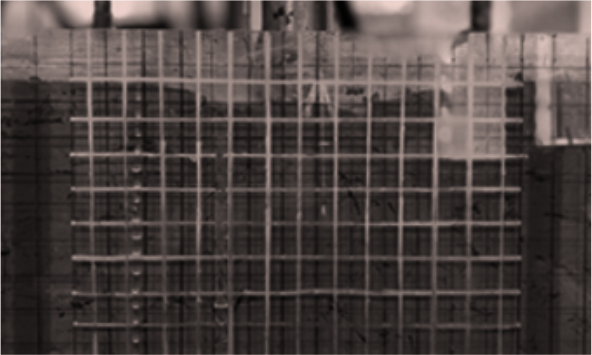Studi Pemodelan Daya Dukung Fondasi Telapak Pada Tanah Lempung Dengan Perkuatan Geotekstil Woven
DOI:
https://doi.org/10.25077/jbkd.1.3.168-176.2023Keywords:
soft soil, woven geotextile, soil bearing capacity, plaxisAbstract
One of the important things in developing decent residential land is the availability of buildings, facilities and infrastructure that are safe and comfortable to live in. However, with the development of settlements and increasingly expensive land, the use of areas with soft soil conditions cannot be avoided. Construction on soft soil causes many problems, including the relatively low bearing capacity of the soil and large settlements so that soil stability is disturbed. The low shear strength of clay soil causes the shear stress generated by the foundation to be large enough to cause the construction building to collapse. To overcome these soil conditions, the soft clay soil is stabilized first. One way to overcome this problem is to add reinforcement material, namely geotextiles. Geotextiles can develop very high tensile strength. Apart from that, geotextiles also function as a filter and hold fine particles so that they are not carried away by water seepage, separating two layers between soil and soil or soil and water so that they do not mix with each other. In this research, modeling will be carried out with variations in the number of geotextile layers, namely 1 layer with a depth of 5 cm, 1 layer with a depth of 10 cm, and 2 layers with a depth of 5 & 10 cm, which will be compared with without using geotextiles. The results of the research showed that the soil bearing capacity in the laboratory with 2 layers of woven geotextile reinforcement with a depth of 5 & 10 cm had the highest value of 9.723N/cm2. As well as the soil bearing capacity in the plaxis software, the highest bearing capacity was found in the hardening soil model material with a depth of 5 cm, amounting to 46,402 N/cm2.
Downloads
References
Andriani, A., Yuliet, R., & Fernandez, F.L. (2012). Pengaruh Penggunaan Semen Sebagai Bahan Stabilisasi Pada Tanah Lempung Daerah Lambung Bukit Terhadap Nilai CBR Tanah. Jurnal Rekayasa Sipil (JRS-Unand), 8(1). https://doi.org/10.25077/jrs.8.1.29-44.2012.
Andriani, Putra, H.G., & Hadie, M.S.N.(2019). Pengaruh Penambahan Tanah Mineral Dan Semen Terhadap Nilai California Bearing Ratio (CBR) Tanah Gambut. Prosiding Seminar Nasional Penelitian dan Pengabdian kepada Masyarakat AvoER XI tahun 2019 (Palembang, 23 Oktober 2019), 162-167. http://ejournal.ft.unsri.ac.id/index.php/avoer/article/view/361/281.
Andriani, Hadie, M.S.N., & Asema, F. (2020). The Effect of Geotechnical Characteristics Toward Road Damage at Lowland Area. IOP Journal of Physics: Conference Series (JPCS), 1500, https://iopscience.iop.org/issue/1742-6596/1500/.
Hakam, A (2008). Rekayasa Pondasi. Padang: CV. Bintang Refika.
Hardiyatmo, H. C. (1996). Teknik Fondasi 1 Edisi Kedua. In Gramedia Pustaka Utama
Haza, Z. F. (2017). Analisis Numerik Penggunaan Geotekstil Di Lapisan Tanah Dasar Pada Proyek Pembangunan Jalan Poncosari-Greges (Kabupaten Bantul, Propinsi Di Yogyakarta). Science Tech: Jurnal Ilmu Pengetahuan dan Teknologi, 3(1), 67-74.
Makinda, J., Putri, E.E., Gungat, L., & Pin, W.H. (2023). Effects Of Filtration Using Soil And Fibre Mediums In Improving The Quality Of Stormwater. Jurnal Bangunan: Konstruksi & Desain, 1(1), 11-20. https://doi.org/10.25077/jbkd.1.1.11-20.2023
Nugraha, S.D. (2021). Analisis Daya Dukung Fondasi Dangkal Pada Tanah Lempung Menggunakan Perkuatan Terpal dan Grid Bambu. Bangka Belitung: Universitas Bangka Belitung
Nugroho, S.A. (2011). Studi Daya Dukung Pondasi Dangkal pada Tanah Gambut dengan Kombinasi Geotekstil dan Grid Bambu. Jurnal Teoritis dan Terapan Bidang Rekayasa Sipil, 18(1),31-40.
Ramli, F. (2014). Penggunaan Terpal dan Grid Bambu sebagai Alternatif Perbaikan Tanah Terhadap Penurunan Pondasi Dangkal pada Tanah Gambut. Jurnal Teknik Sipil dan Lingkungan, 2(3), 343-349.
Tjandrawibawa, S., & Patmadjaja, H. (2002). Pemodelan Fondasi Dangkal dengan Menggunakan Tiga Lapis Geotekstil di Atas Tanah Liat Lunak, Dimensi Teknik Sipil, 4(1), 15-18.
Widianti, A. (2012). Pengaruh Jumlah Lapisan dan Spasi Perkuatan Geosintetik terhadap Kuat Dukung dan Penurunan Tanah Lempung Lunak. Jurnal Ilmiah Semesta Teknika, 15(1), 90-97.
Yulianti, P. (2014). Studi Pemodelan Perkuatan Pondasi Dangkal Pada Tanah Lempung Lunak Menggunakan Kombinasi Geotekstil Woven Dan Grid Bambu Dengan Bantuan Program Plaxis. Jurnal Teknik Sipil dan Lingkungan, Vol. 2(3).

Downloads
Published
How to Cite
Issue
Section
License
Copyright (c) 2023 Hendri Gusti Putra, Andriani Andriani, Abdul Hakam, Viola De Boyosa

This work is licensed under a Creative Commons Attribution-NonCommercial 4.0 International License.



